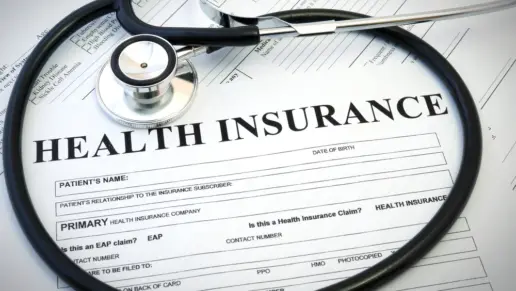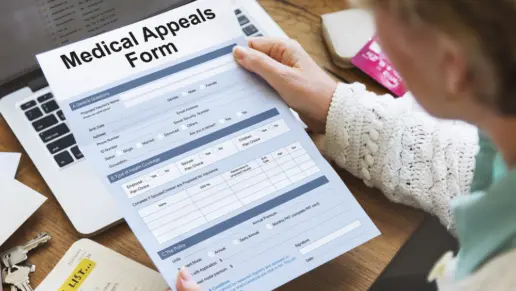Benefits of the ACA and Parity Acts
The Affordable Care Act (ACA) was enacted in 2010 and aimed to make lower healthcare costs and high-quality treatment available to many more Americans.1 As a result of this law, most health insurance policies must cover drug and alcohol addiction treatment.
Additionally, the Mental Health Parity and Addiction Equity Act (MHPAEA) requires health insurance plans to cover the treatment of mental health or substance use disorders to the same degree as other medical issues.2
There are some exceptions, but generally speaking, the ACA:
- Compels your insurance company to fully or partially cover your treatment
- Reduces addiction treatment costs and increases treatment options
- Extends many benefits of employer-provided insurance plans to individual medical insurance plans
- Allows young adults ages 26 and younger to remain on their parents’ healthcare plan.
Like many types of insurance, the more you pay as a monthly premium, the less you pay when you file a claim. In some cases, your insurance may cover all of your treatment. In other cases, you may need to pay a set deductible amount, copay, and coinsurance towards your treatment costs.
How the ACA Improved Access to Addiction Treatment Services
The ACA has impacted addiction treatment in four areas:7
- Insurance Coverage
- Extends insurance coverage to people who were previously uninsured
- Prevents insurers from denying insurance to people with pre-existing conditions (such as substance use disorders)
- Insurance Regulations
- Requires all insurance plans to cover substance use disorder screening and brief intervention
- Requires coverage of the Essential Health Benefits package (which often includes substance use disorder treatment)
- Parity (Equal Coverage)
- Extends the Mental Health Parity and Addiction Equity Act, requiring insurers to cover substance use treatment at the same level as other medical services.
- Integrated Treatment
- Offers opportunities to integrate addiction treatment with mainstream healthcare.
- Allows reimbursement for multiple services with a single budget.
- Incentivizes coordination and integration of care for those receiving treatment for addiction.
Affordable Care Act Fast Facts
- In 2022, more than 40 million people are currently enrolled in Marketplace or Medicaid expansion coverage related to provisions of the Affordable Care Act.9
- In 2020, 87% of the people who purchased coverage through the ACA Marketplace received subsidies to lower the cost.4
- By 2020, the expanded coverage of the ACA gave first-time access to addiction treatment coverage for 32 million people.5
Addiction Services Covered by ACA Plans Include:
- Inpatient and residential treatment
- Halfway houses
- Partial hospitalization programs (PHP)
- Individual counseling (CBT, MET)
- Intensive Outpatient Programs (IOP)
- Medication Group counseling
- Assertive Continuing Care (ACC)—often used to help adolescents
- Mutual help groups
How Much Does ACA Insurance Cost?
The cost depends on the particular plan purchased. There are four “metal” categories that represent the types of plans developed under the ACA. Those Marketplace plans are:3
- Bronze plans – 60 percent expense coverage
- Silver plans – 70 percent expense coverage
- Gold plans – 80 percent expense coverage
- Platinum plans – 90 percent expense coverage
Are You Eligible to Shop the Marketplace for Obamacare?
To be eligible to enroll in health coverage through the Marketplace, you:4
- Must live in the United States.
- Must be a U.S. citizen or national (or be lawfully present). Learn about eligible immigration statuses.
- Can’t be incarcerated.
Getting Ready to Apply for ACA Insurance Coverage
If you’re applying for ACA insurance coverage through the Marketplace, be sure to have the following information ready before you start your application. It will help you complete the application much faster.
Your Marketplace application will ask you for some basic information, which can include the following:8
- Your name and date of birth.
- Information about your household and each person in your household – even those not applying for coverage. For the Marketplace, your household usually includes those who file taxes and those who are tax dependents, but there are exceptions. Sometimes it can include people you live with who aren’t in your tax household.
As you fill out your application, you may be asked questions about the following people:
- Your spouse
- Your children who live with you, even if they make enough money to file a tax return themselves
- Anyone you include on your tax return as a dependent, even if they don’t live with you
- Anyone else under 21 who you take care of and who lives with you
- Your unmarried partner, only if one or both of these apply:
- They’re your dependent for tax purposes
- They’re the parent of your child
The Marketplace application will ask you for some basic information about everyone applying for coverage, including their relationship(s) to you.
- Supply home and/or mailing addresses for everyone who is applying for coverage. Where you live can affect what health coverage you’re eligible for. You’ll enter your home address to show if you’re a resident of the state where you’re looking for coverage. You’ll select your state at the beginning of the application.
- If anyone on your application has a different home or mailing address, you’ll need to list it also.
- Social Security Numbers (SSNs) for everyone on your application. Your Marketplace application will ask you for each person’s 9-digit SSN, even those not applying for coverage. The Marketplace will confirm the SSNs with Social Security, after you give consent at the start of your application. If you don’t enter an SSN, you may need to provide more information at a later time.
- Information about the professional helping you apply, if any. If a professional is helping you complete your application, you’ll enter their information. These professionals include navigators, certified application counselors, in-person assistance personnel, agents, and brokers.
- Immigration document information (this only applies to lawfully present immigrants). If anyone on your application who needs coverage is a lawfully present immigrant, you’ll be asked to provide information from their immigration documents.
- Information on how you’ll file your taxes. If you file federal income taxes and are married, the Marketplace needs to know if you file separately or jointly. You’ll also be asked about who you claim as a tax dependent.
- Employer and income information for everyone in your household. Your Marketplace application may ask you about the income and expenses of everyone in your household, even those not applying for coverage.
The Marketplace counts these as income:
-
- Wages and salaries, as reported on your W-2 form and pay stubs
- Tips
- Net income from any self-employment or business
- Unemployment compensation
- Social Security payments, including disability payments (but not Supplemental Security Income (SSI))
- Alimony for divorces and separations finalized before January 1, 2019
- Retirement or pension income, including most IRA or 401k withdrawals
- Investment income, like dividends or interest
- Rental income
- Other taxable income
- Your best estimate of your household income. Your Marketplace application may ask you to estimate what your household income will be in the year you’re applying for coverage. If you’re not sure, it’s okay to make your best estimate. If your income changes, or is different than what you estimated, you’ll need to update this information later. To help you calculate your household income, visit gov/incomecalculator.
- Current health coverage information. Your Marketplace application will ask if anyone in your household is currently enrolled in health coverage, including Medicaid, the Children’s Health Insurance Program (CHIP), Medicare, TRICARE, VA health care program, Peace Corps, COBRA, retiree insurance, or coverage through individual insurance (including Marketplace coverage) or an employer.
- If anyone has coverage now, you may need to enter their policy numbers. You can find this information on their insurance card or documents they get from their plan.
- Employer information for each person in your household. Your Marketplace application will ask you for information about any job-based plan you or anyone in your household is eligible for. It will ask you for employer contact information for each person in your household who has a job.
Resources:
- Norris, L. (2022, November 1). Will you receive an ACA premium subsidy? Healthinsurance.Org.
- Mental health parity. (n.d.). DIFI. Retrieved May 27, 2023, from https://difi.az.gov/content/mental-health-parity-1
- Anderson, S. (2022, October 26). What are Obamacare metal plans? Healthinsurance.Org.
- Insurance, eHealth. (2017, September 22). Understanding Obamacare subsidies and eligibility. eHealth Insurance.
- Abraham, A. J., Andrews, C. M., Grogan, C. M., D’Aunno, T., Humphreys, K. N., Pollack, H. A., & Friedmann, P. D. (2017). The affordable care act transformation of substance use disorder treatment. American Journal of Public Health, 107(1). https://doi.org/10.2105/AJPH.2016.303558
- 2021-12-30 15:27. (n.d.). Archive of HHS.Gov. Retrieved May 27, 2023.
- Norris, L. (2020, November 13). How Obamacare improved mental health coverage. Healthinsurance.Org.
- Get ready to apply for 2023 coverage. (n.d.). HealthCare.Gov. Retrieved May 26, 2023, from https://www.healthcare.gov/apply-and-enroll/get-ready-to-apply/
- Rose.Chu. (n.d.). Microsoft Word – Health Coverage Under ACA 03-22-2023 Final version_.




